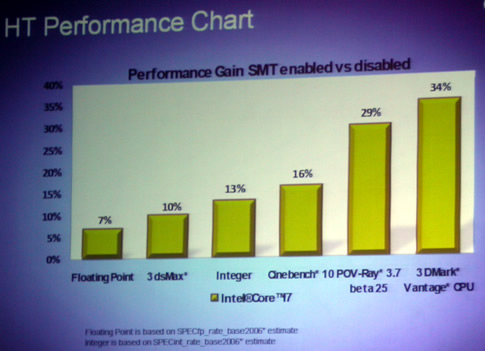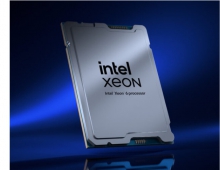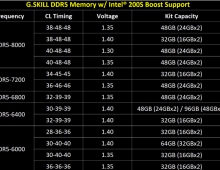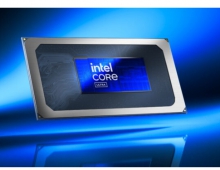
Intel Core i7 Nehalem Processors Launch on November 17
Intel provided information about its next-generation micro-architecture (Nehalem) with the Core i7 processors at a media event on Wednesday in Athens, Greece, prior to the worldwide official release of the system on November 17.
The two major characteristics of the new i7 architecture are the triple-channel integrated memory controllers and the new interface called Quick Path Interconnect (QPI). Other highlights include the monolithic die to consolidate all four cores in a single piece of silicon, and the shared L3 cache. Further improvements include the use of the Hyper-threading as well as the Turbo Boost technologies. The Core i7 processors are also optimized to operate with Intel's X58 chipset.



The Corei7 series will feature three quad-core models: The 2.66 GHz Core i7 920 will aim for the sub-$1000 class of PCs, the 2.93 GHz Core i7 940 for more expensive PCs in the $1500-$2000 range and the 3.2 GHz 965 Extreme Edition at enthusiast PCs.
The prices (1K pieces) of these CPUs are $999 for the Extreme Edition, $562 for the 940 and $284 for the 920.

The X58 Express chipset covers both the northbridge/southbridge operations. The X58 IOH supports up to 36 PCIe 2.0 lanes. Depending on the processor model, QPI may run at either 6.4 GT/sec (Core i7-965) or 6.4 GT/sec (Core i7-940, i7-920) to communicate with the X58 Express chipset in each direction. This is twice the bandwidth of Intel's currently available X48 chipset, plus the full-duplex transport instead of the half-duplex. AMD's HyperTransport 3.0 still has an advantage herewith up to 41.6GB/s of bi-directional bandwidth.

However, the X58 Express does not support the legacy PS/2 IDE, serial or parallel ports.
Turbo mode
Under the "TurboMode", the utilization of the number of active cores is used to adjust the frequency. For example,
if only two cores are active, then there will be much more headroom within the thermal and power envelope and the CPU will be clocked higher. So the "turbo" frequencies of each core depend on the number of cores active. We could say that this is mainly a power saving feature.
Turbo Mode boasts single threaded applications as well as the performance of multi-threaded applications, according to Intel.
Below is a graph that Intel showed with the Core i7 Extreme CPU to process in single-core and quad-core configurations, with Turbo Mode enabled. The graph shows the percent performance increase with Turbo Mode enabled.


Benchmarks and performance
Intel also gave live demonstrations of the Core i7 system using various benchmarks. The company compared two systems powered by Intel's currently available high-end Core 2 Extreme QX9770 and the new Core i7 Extreme 965 processors:
Core i7 vs. Core 2 Quad |
||
Centrino platform |
Core 2 Extreme QX9770 |
Core i7 Extreme 965 |
CPU |
Core 2 Extreme QX9770 @ 3.2 GHz |
Core i7 Extreme 965 @ 3.2GHz |
Chipset |
X48 |
X58 |
Memory |
Kingston 2GB DDR2-1066 (1x2GB) |
Kingston 2GB DDR3-1066 (1x2GB) |
Graphics |
ATI 4850 |
ATI 4850 |
HDD |
SATA 120GB 5.4K2.5" |
SATA 120GB 5.4K2.5" |
According to Sisoft Sandra memory bandwidth benchmark, the Core i7 Extreme 965 was faster by the Core 2 Extreme QX9770 by 2.3x.
The latency of the CPU cores was 42nsec for the Core 2 Extreme QX9770 and just 14nsec for the new Core i7 Extreme 965.
In Maxon Cinebench graphics rendering application, the Core i7 Extreme 965 required 25% less time than the Core 2 Extreme QX9770 to finish the same task.
Intel also fired up Valve's Value Particle benchmark and monitored the produced FPS form each system, while rendering the same scene. The performance gain of the Core i7 Extreme 965 was 15 FPS on average.
In general, Intel concluded that the new Core i7 CPUs can offer 50% higher performance than the existing CPUs.
Future roadmaps
Intel also provided some information about the future desktop platforms. In the Q3 of 2009, the company will release the Lynnfield platform, which includes the i7 CPUs and the P55 and G55 chipsets. Compared to today's three-chip solution, (CPU, chipset, I/O), Lynnfield will be a 2-chip solution, with the graphics to move into the ibex Peak chipset:

The next step is the introduction of the Havendale platform, where the graphics migrate into the CPU itself.






















